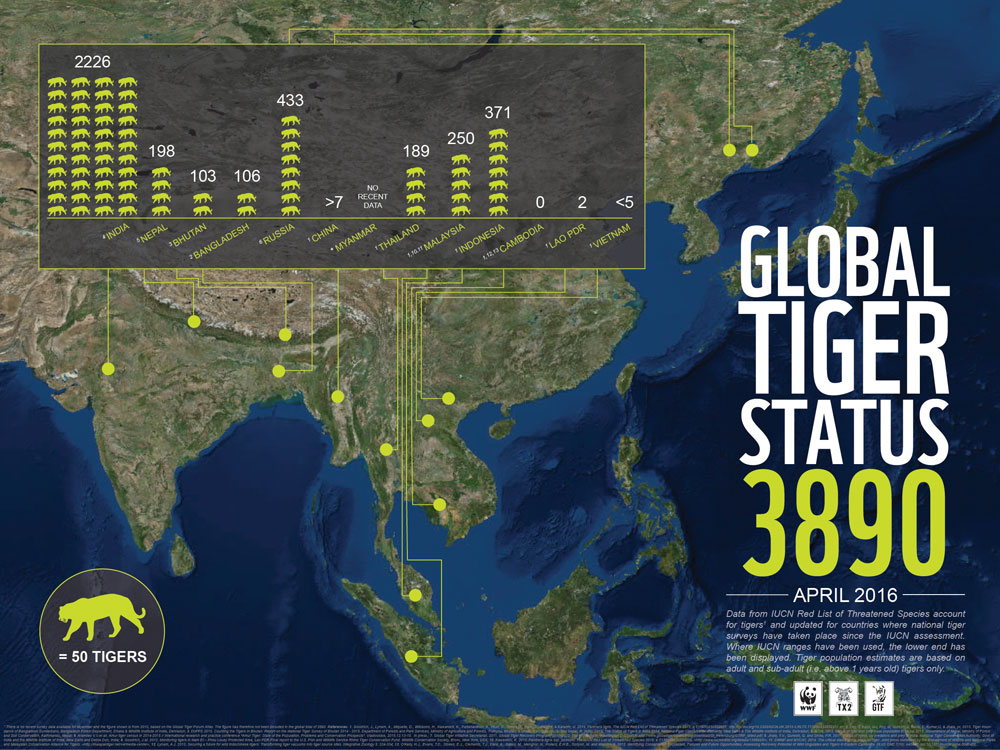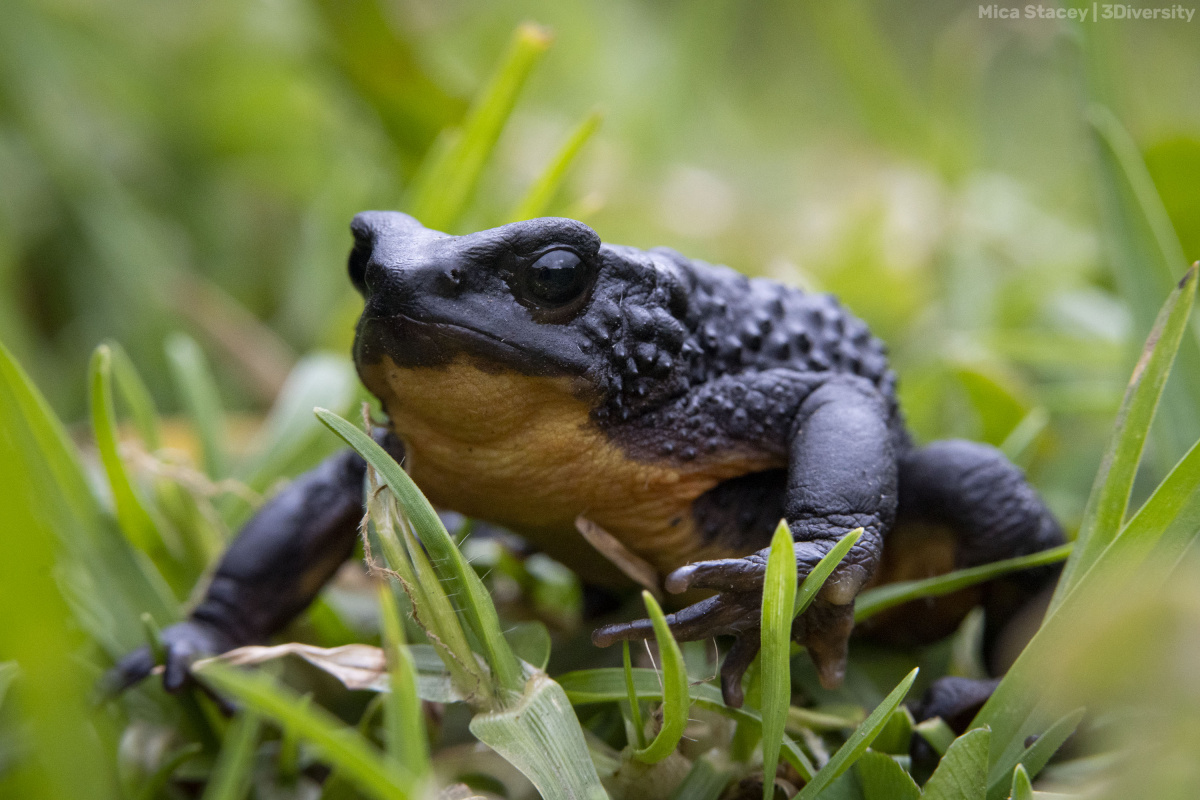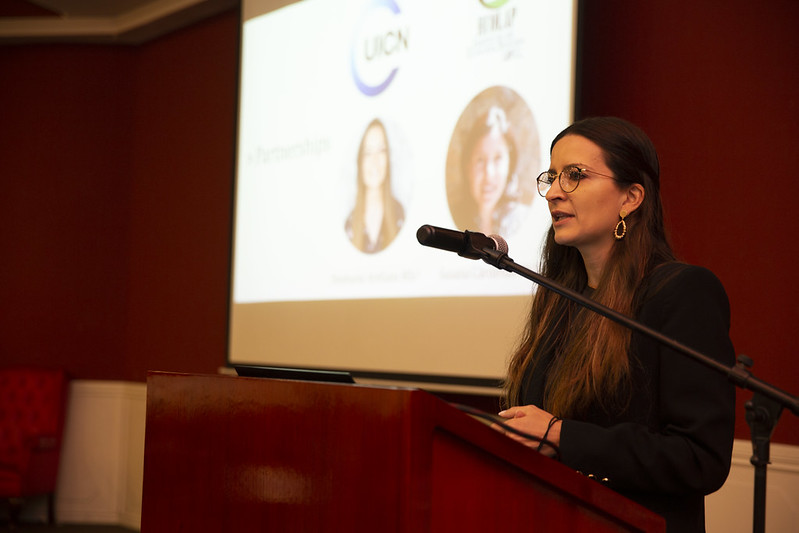IUCN / KfW Tiger programme has started successfully the implementation phase
Being at the top of the food chain, tigers need sprawling habitats, adequate prey and an intact ecosystem for their survival. Protecting these habitats and supporting the sustainable socio-economic development of the local communities living in and adjacent to these habitats are the aims of the Integrated Tiger Habitat Conservation Programme (ITHCP). Reduced to a simple denominator, this means: tigers can only survive in the long-term in the wild where the habitat is intact, and can only live alongside people where people live and interact with the environment sustainably.
The ITHCP was started in 2014. The German Ministry for Economic Cooperation and Development (BMZ) provided 20 million euros under its Financial Co-operation scheme. The German Development Bank, KfW, administers the financial cooperation on behalf of the BMZ. This is a novel programmatic approach that has the scope to establish projects in all tiger range countries that have cooperation agreements with BMZ.
KfW Development Bank has commissioned IUCN as Implementation Agency to have a partner which is unbiased, has a high credibility with environmental NGOs, is highly competent in nature conservation and works according to transparent procedures, to ensure a high level of professionalism. In addition, IUCN has a vast network of NGOs and individual experts, which gives them good insights into the NGO scene and the local context of individual projects, which can be mobilized for a better informed selection of proposed projects and monitoring during the course of their implementation.
A development bank has a different approach to project appraisal and implementation than an NGO. It has a structured mandate which is result-oriented and expects at the end of the programme a contribution to a self-sustaining process of development or at least a sustainable continuation of established structures and assets. Therefore for the tiger projects, KfW places great emphasis on livelihood measures and community development. Also, KfW gives the highest priority to the sustainable operation of created assets after project completion and unless project proponents can demonstrate that they are able to mobilize sufficient resources for the sustainable financing of their operating costs, KfW will be very hesitant to support any project.
NGOs generally work in the same way, but are more willing to accept less in terms of results if outputs are in the interests of stakeholders involved or important results are achieved over a shorter time-frame. Of course, NGOs and IUCN have a perspective that is closer to local communities and nature with their activities. This knowledge has been brought into the programme design by IUCN. The combination of the skills of a development bank and IUCN’s competency, coupled with NGO experience in protection of nature and species complement each other well and is reflected in a well-balanced programme.
Although the tiger is in many of the 13 Asian tiger range countries a mystical animal whose strength, speed and imposing appearance trigger admiration, it is an Endangered species that has been hunted mercilessly over the last 100 years. Due to human population pressure, expansion of transport infrastructure and increased demand for natural resources, its habitats have been shrinking. In 2010, there were only 3,200 tigers left in the wild; a dramatic decline compared to more than 100,000 tigers at the beginning of the 20th century. Even though the tiger is a symbol of strength and power and a companion of gods in the mythologies of Asia, this status has not really protected it.
However, there is hope: India's Prime Minister Modi held a highly regarded opening address at the 3rd Asia Ministerial Conference on Tiger Conservation (April 2016) in New Delhi, in which he stated, "the Tiger is much more than an animal, it is mysticism" and also noted "conservation is not a choice, it is an imperative”.
At this conference the Global Tiger Forum (GTF) and WWF presented tiger population figures showing a slight increase to 3,890 individuals. Undoubtedly, in some countries there are improvements in the area of habitat protection. However, it cannot be concluded that we are on the path to achieve the objective of the 2010 St. Petersburg Conference, the doubling of tigers in the wild by 2022. The ever-increasing population pressure, the increasing demand for farmland, the need for expansion of transport infrastructure, rampant poaching driven by the illegal demand for tiger parts for Asian medicine put a high pressure on tigers and their habitats. These pressures are immense, and it is and will continue to be, thus, a tremendous challenge to protect the tigers and their habitats.
Up to now eight projects have been committed under the ITHCP and their implementation is underway. The second call for proposals has been carried out and there are now four additional projects nearing approval. The ongoing projects are located in India, Nepal, Bhutan, Myanmar and Indonesia. When analysing the portfolio of selected projects, a few observations stand out: projects in smaller countries have successfully competed with the big tiger range countries like India and Indonesia, a significant number of successful projects put emphasis on trans-boundary efforts for tiger conservation. Apart from the protection of tiger source sites, the development of eco-corridors which aim to connect and extend tiger habitats is an important component of many projects. And, last but not least: in all projects livelihood activities and community development are a high priority.
It is also important to support people in the habitats and adjacent areas, and to raise awareness locally so that people realize that the protection of nature will benefit them if they support sustainable development in the framework of the projects. Improvement in the fields of agriculture, livestock and forestry, energy supply, the organization of self-help groups, job creation for local rangers, in the tourism sector, in handicraft and retail trade as well as the construction of infrastructure and its maintenance will bring an increase in quality of life for the local population.
Only if we manage to win the support of the local people, can we stabilize ecosystems and habitats in the long-term, in which our fellow creatures can survive in the wild.
Uwe Ohls, Member of the Programme Council of ITHCP and former Senior Vice President for Europe and Asia of KfW Development Bank






